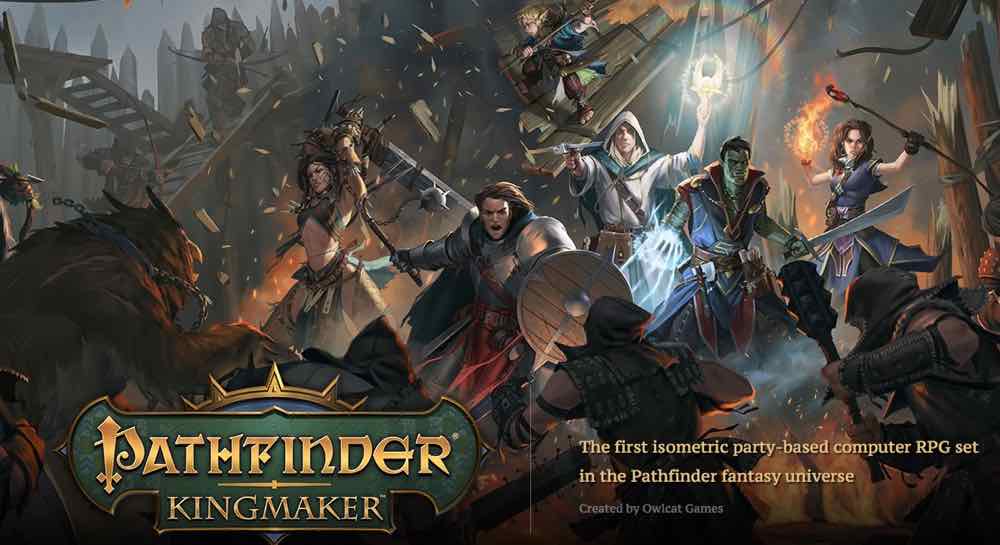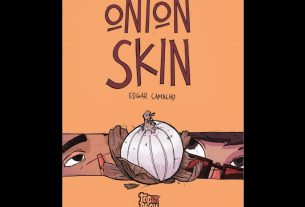
In July, I wrote about the arrival of Games Workshop’s Contrast paints, a new range it claimed they would revolutionize the way we paint our figures. I laid out a 4-step program as to how I was going to investigate the properties of the paint and help determine whether they were something you might want to add to your paint repertoire.
As ever, my painting plans have been knocked about a bit, not least because of the arrival of Warhammer AoS: Warcry. Reviewing this set has taken up a fair amount of my hobby time, but it has also meant I’ve needed to crack on with some painting. In that respect, the arrival of Contrast paints has been extremely fortuitous.
Here then are 13 things I’ve learned about Contrast paints.
1. They’re Another Tool in Your Paint Box
Whilst you could get away with only using Contrast paints, you’re not going to want to. For a start, you’re probably going to want some metallics. Lots of painters greater than I have already mentioned this, but Contrast paints are just another tool in your painter’s box. They most definitely have their uses, but much as you wouldn’t (shouldn’t) use your hammer to pound screws into the wall, they can’t do everything. There are, however, some painting jobs at which they excel, and after some initial skepticism, I wouldn’t be without them.
2. You’re Not Going to Want to Use One Thick Coat
“One thick coat” was the Contrast paints marketing slogan, a riff on Duncan’s “two thin coats” catchphrase from the Warhammer TV painting videos. One thick coat works OK, but little more than that. We’ve slapped paint thickly on a few Space Marines models, and frankly, the results haven’t been all that good. My son was particularly uninspired with his results.

3. These Weren’t the Paints my Children Were Looking For
My middle son had fun with these paints, and we discovered that the black, in particular, is very good, even over large flat areas. My older son, trying to paint some Dark Angels, was most unimpressed. And I can’t say I blame him. He would, I think, have been better spraying a base coat of green, adding a wash, and then dry brushing over the top.
4. You Tend to Need to Work Light to Dark
If you’re using exclusively Contrast, you will run into the same issues as my son did. You can’t paint lighter colors over dark colors. This used to be a problem in days of yore. Sunburst Yellow nearly always required a fresh white basecoat over the area you were wanting to paint it on. The current Citadel Base range is so good, that for modern painters, this is rarely an issue. At my painting level, even lighter colors can be painted over darker areas, with little detriment to the finished effect. Especially if you used two thin coats. With Contrast, you just can’t do that.
Moreover, if you’re using a mix of Contrast and more solid colors, be careful about putting down the Contrast paints first. If you end up with solid base paint on your completed Contrast layer by mistake, the error is hard to rectify.

5. You Will Need the Brush-on Base Primer
To get around this problem, you will need some brush-on primer. This was probably the deal breaker for my son. If you get the darker-toned Contrast paints where you want to paint the lighter paints, you HAVE to repaint your mistakes with the primer. It’s not a massive problem, though the primer paint is quite gloopy and probably will need thinning down a little. Psychologically, I think it’s daunting for new painters. It feels a little like moving backward, and then there is the inevitable worry you’ll accidentally paint over the parts you’ve already painted. Even for somebody who paints fairly regularly like myself, there’s a psychological barrier for painstakingly painting over something you’re just going to paint over again.
6. They Work Best on Organic Materials and Capes
Contrast paints come into their own when painting organic materials, anything with recesses, or surfaces that flow. The paint sits where it’s supposed to and gives good highlights on prominent edges. Painting my Sylvaneth Warhammer Underworlds models went like a dream, as the paint worked exactly as advertised over their wooden skin textures.
Similarly, the bone and cape on this Journeys in Middle Earth model look amazing compared with the lack of effort put in. The wight took about 20mins paint time altogether.

7. You Need the Contrast Medium
Alongside the paint range, you can buy a couple of “technical” paints, two of which I haven’t used yet, the third, the Contrast Medium, I’ve used loads of. So much that when painting the Warcry scenery, I’ve had to buy a second bottle. There are a couple of reasons for this. First and foremost is that it gives you better control of the paint. If you apply the paint neatly, it can clump together and end up patchy and too dark. By diluting 1:1 with medium, the paint flows better to where it’s meant to go, giving a cleaner finish. You also have better control over the final color. You can either leave it at one coat for a more subtle effect or add an additional coat for stronger, even finish.
If you do get some Contrast Medium, consider buying a dropper bottle to transfer it into. (See entry 12, below) Note: You can’t thin these paints with water. I haven’t tried it but it ruins the properties of the paint, apparently.
8. They’re Awesome for Wet Blending
I’ve not done that much wet blending, but it’s a popular technique that allows you to get smooth color transitions. The runnier consistency of the Contrast paints (particularly if you’re diluting it down using medium) make them great for it. It’s very easy to mix colors together by grades to get a smooth transition from one to the other.

9. A Little Goes a Long Way
If you’ve used the light-colored Contrast primers, it’s super easy to blend from dark to light, as the paint goes a long way. Even by simply blending with a finger or a piece of tissue, you can make a nice effect running from dark to light. It’s worth noting that you can push the pigments a long way when diluting them with the Contrast Medium, and a little paint can be made to go a long way.
It’s worth experimenting, as over different primers you can get quite a different tone, and even across the same primer, how diluted the paint is and how far you spread the paint can drastically alter the shade of the finished model. I found this to be particularly effective when painting scenery. On wood, you can create different tones, so it looks like some of it has bleached, and when painting my Warcry scenery, I was able to get a good sandstone effect. This took some experimenting and my first building is quite a bit darker than the others, as I hadn’t realized just how far a little bit of pigment would go. Final results were achieved using a mix of around 15:1 medium:paint. As mentioned above, I did use a lot of medium this way, and there are surely more cost-effective ways of doing things.
10. Good Flow Is Not Always Good
If you’re a bit slapdash with the brush like me, runny, flowing paint is not always ideal. Keep a tissue or a dry brush handy for soaking up the overspill. On the plus side, because of their more translucent nature, paint overspill won’t be noticed quite so much.

11. They’re Great Over Metallics
It’s pretty well documented that the Contrast paints work well over metallics, and my own experience bears this out. I haven’t finished painting the Necrons yet, but I’m impressed with the effect I got. I also used them to good effect on my Iron Golems.
12. The Paintpots Are Still Terrible
I feel that GW have a blindspot for paint pots. They seem to relish in making pots with lids that don’t seal very well. This means paint dries out far too easily. I’m in the process of replacing my Citadel paints with Vallejo equivalents. Each time I find a pot that has dried out since I last used it (a depressingly frequent occurrence), I buy a Vallejo paint to replace it. Mainly because Vallejo paints come in dropper bottles.
Not only do dropper bottles stop paint drying out, they’re much better for putting paint on to a palette without clogging up your brush. They’re better for mixing too. Dropper bottles prevent accidental cross-contamination of paint, as you don’t have to stick a paintbrush in the paint each time you want some more. Additionally, every time you wash your brush and use it to add to your paint reservoir, you change the consistency of the paint. I’ve often ended up with paint that is the right shade but too runny. Dropper bottles stop this problem too.

For Contrast paints, because they are runnier, they’re less likely to dry out, but they will spill more easily if you knock an open pot over. If they were in a dropper bottle there would be a much small risk of spillage. It seems particularly short-sighted with the larger, more easily spilled medium bottles.
13. The Paint Can Rub Off if You Handle It
I haven’t had a huge problem with this, but I have noticed that if you handle models painted with Contrast paint, the paint is prone to coming off. You can get around this by adding a varnish. Whilst this is relatively simple, it’s another time-cost that you need to consider when deciding if contrasts are the paints for you.

The TL;DR
Contrast paints have a multitude of uses and they can definitely speed up a painting project if you want to bring a large army to the table quickly. The paints are not as simple to use as made out, or if you do use them crudely, you may be disappointed with the finished model. On the right surfaces, however, a quick paint of 4 or 5 Contrast paint colors can give you a fine-looking model in the fraction of the time when using more traditional paints.
Like all art tools, practice makes perfect, and some sublime effects can be created using Contrast paints, even if you aren’t generally the type of artist who uses “technical” paints to take your minis to the next level. You’re definitely going to want to pick up some Contrast medium to help alter the properties of the paint and better control the paint intensity on your models. With a little bit of practice and experimenting with color intensities, Contrast paints can help turn your painting up to 11.
Disclosure: I received a set of contrast paints to try out.



